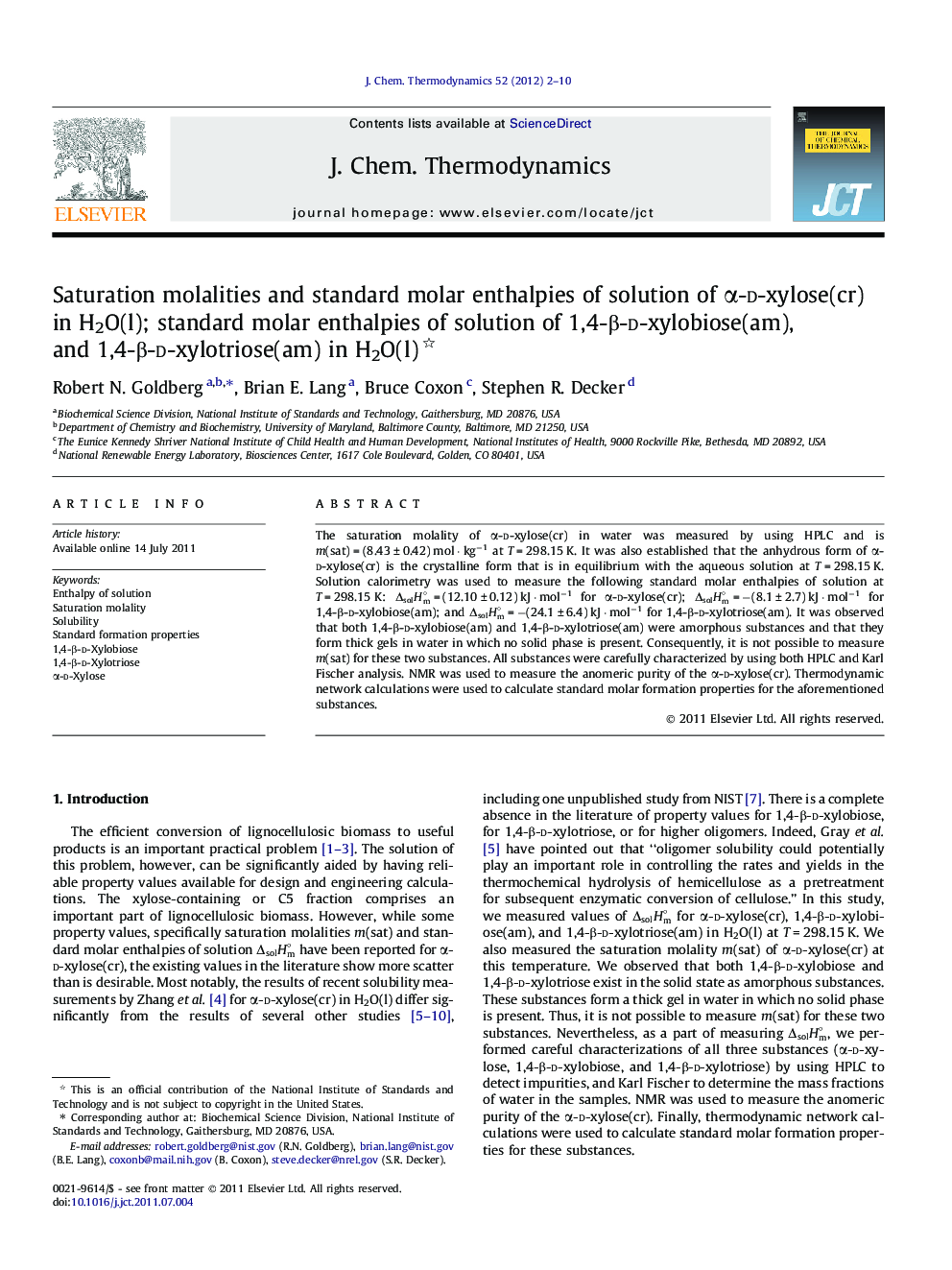| Article ID | Journal | Published Year | Pages | File Type |
|---|---|---|---|---|
| 216023 | The Journal of Chemical Thermodynamics | 2012 | 9 Pages |
The saturation molality of α-d-xylose(cr) in water was measured by using HPLC and is m(sat) = (8.43 ± 0.42) mol · kg−1 at T = 298.15 K. It was also established that the anhydrous form of α-d-xylose(cr) is the crystalline form that is in equilibrium with the aqueous solution at T = 298.15 K. Solution calorimetry was used to measure the following standard molar enthalpies of solution at T = 298.15 K: ΔsolHm∘ = (12.10 ± 0.12) kJ · mol−1 for α-d-xylose(cr); ΔsolHm∘ = −(8.1 ± 2.7) kJ · mol−1 for 1,4-β-d-xylobiose(am); and ΔsolHm∘ = −(24.1 ± 6.4) kJ · mol−1 for 1,4-β-d-xylotriose(am). It was observed that both 1,4-β-d-xylobiose(am) and 1,4-β-d-xylotriose(am) were amorphous substances and that they form thick gels in water in which no solid phase is present. Consequently, it is not possible to measure m(sat) for these two substances. All substances were carefully characterized by using both HPLC and Karl Fischer analysis. NMR was used to measure the anomeric purity of the α-d-xylose(cr). Thermodynamic network calculations were used to calculate standard molar formation properties for the aforementioned substances.
► Saturation molalities and standard molar enthalpies of solution of α-d-xylose(cr) in H2O(l). ► Standard molar enthalpies of solution of 1,4-β-d-xylobiose(am), and 1,4-β-d-xylotriose(am) in H2O(l). ► Standard formation properties of α-d-xylose(cr), 1,4-β-d-xylobiose(am), and 1,4-β-d-xylotriose(am). ► Carefully characterized materials and statements of uncertainty ► Results are relevant to biomass utilization.
